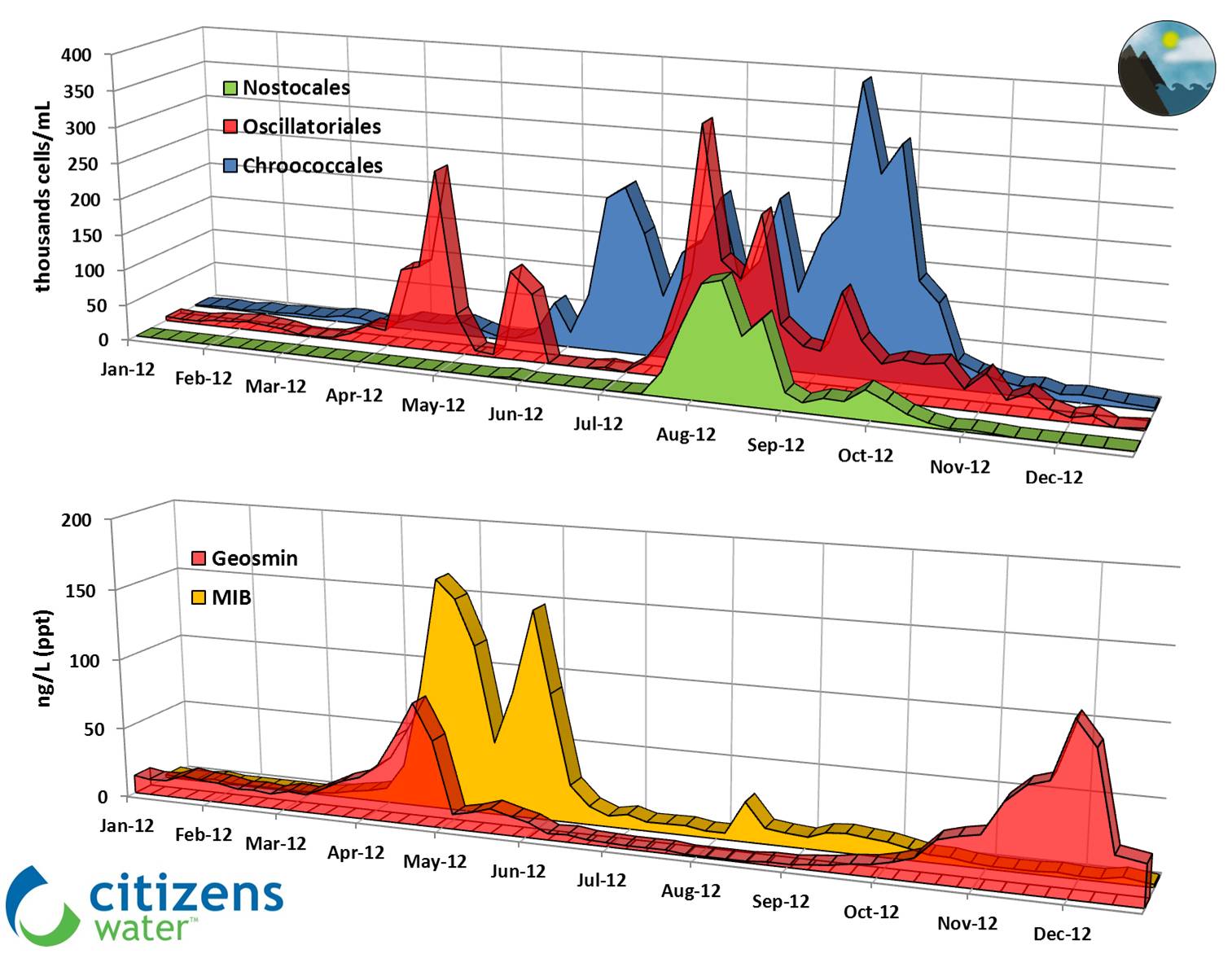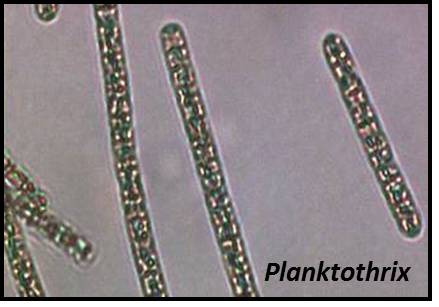The development and proliferation of algal blooms likely result from a combination of environmental factors including available nutrients, temperature, sunlight, ecosystem disturbance (stable/mixing conditions, turbidity), hydrology (river flow and water storage levels) and the water chemistry (pH, conductivity, salinity, carbon availabiliy).
However, the combination of factors that trigger and sustain an algal bloom is not well understood at present and it is not possible to attribute algal blooms to any specific factor.
Nutrients
Nutrients promote and support the growth of algae and Cyanobacteria. The eutrophication (nutrient enrichment) of waterways is considered as a major factor. The main nutrients contributing to eutrophication are phosphorus and nitrogen.
In the landscape, runoff and soil erosion from fertilized agricultural areas and lawns, erosion from river banks, river beds, land clearing (deforestation), and sewage effluent are the major sources of phosphorus and nitrogen entering water ways. All of these are considered as external sources.
Internal origin of nutrients comes from the lake/reservoir sediments. Phosphate attaches to sediments. When dissolved oxygen concentration is low in the water (anoxic), sediments release phosphate into the water column. This phenomenon encourages the growth of algae.
Temperature
Early blue–green algal blooms usually develop during the spring when water temperature is higher and there is increased light. The growth is sustained during the warmer months of the year. Water temperatures above 25°C are optimal for the growth of Cyanobacteria. At these temperatures, blue–green algae have a competitive advantage over other types of algae whose optimal growth temperature is lower (12-15°C).
In temperate regions, blue–green algal blooms generally do not persist through the winter months due to low water temperatures. Higher water temperatures in tropical regions may cause blue–green algal blooms to persist throughout the year.
Light
Blue–green algae populations are diminished when they are exposed to long periods of high light intensity (photo-inhibition) but have optimal growth when intermittently exposed to high light intensities. These conditions are met under the water surface where light environment is fluctuating.
Even under low light conditions, or in turbid water, blue–green algae have higher growth rates than any other group of algae. This ability to adapt to variable light conditions gives cyanobacteria a competitive advantage over other algal species.
Stable conditions
Most of blue–green algae prefer stable water conditions with low flows, long retention times, light winds and minimal turbulence; other prefer mixing conditions and turbid environments.
Drought, water extraction for irrigation, human and stock consumption and the regulation of rivers by weirs and dams all contribute to decreased flows of water in our river systems. Water moves more slowly or becomes ponded, which encourages the growth of algae.
In water bodies, another consequence of stable conditions is thermal stratification. Thermal stratification occurs when the top layer of the water column becomes warmer and the lower layer remains cooler. When the two layers stop mixing, the upper layer becomes more stable (no wind-induced mixing, convection cells)and summer blooms of buoyant blue-green algae are supported.
When a water body is stratified, bottom waters often become depleted with oxygen (anoxia) which may lead to increased nutrient release from the sediments. Pulses of nutrient from the colder bottom layer may fuel up the algal growth in the top layer.
Turbidity
Turbidity is caused by the presence of suspended particles and organic matter (flocs) in the water column. High turbidity occurs when a lot of water is running through the system (high discharge after a rain event). Low turbidity occurs when there is only a small amount of suspended matter present in the water column. Low turbidity can be due to slow moving or stagnant water that allows suspended articles to settle out of the water column. When turbidity is low, more light can penetrate through the water column. This creates optimal conditions for algal growth. In return, growing algae create a turbid environment.





